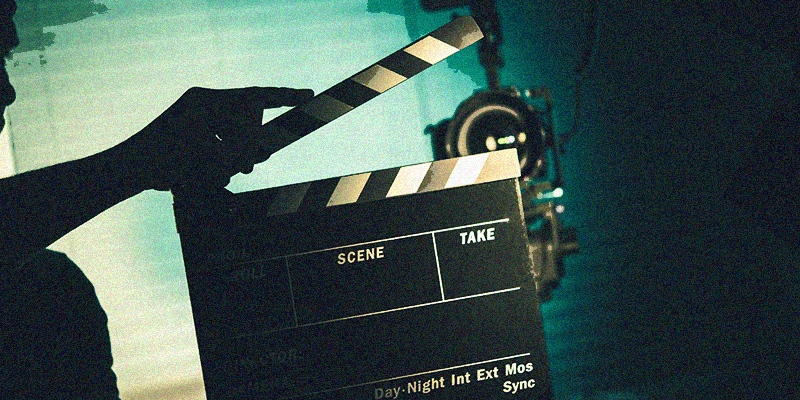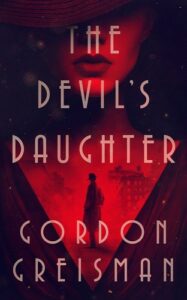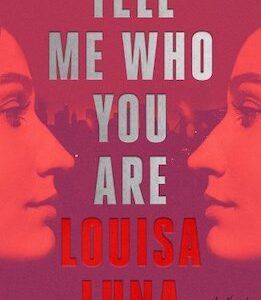The publication date for my debut novel, The Devil’s Daughter is days away. In a sense it’s the apotheosis of my writing career. I’ve spent decades as a working Hollywood screenwriter, which turns out to be something of a mixed blessing. The money is good. The creative experience, not so much. After years of being critiqued by studio and network executives, The Devil’s Daughter was finally my chance to write exactly what I wanted to write. The noir hero, Jack Coffey, lives in 1950s New York, a city of great jazz clubs, glamorous women, big city corruption and mob violence. It’s written in a style very much my own, but influenced by the time I spent working with Michael Mann.
I was sitting in my office at the old Warner Brothers/Hollywood studio, when the phone range. My assistant (I had an overall writing deal at the time that came complete with an assistant), called out, “Gordon, Michael Mann for you.” Now, I knew Michael socially, not professionally. Our wives were friends and, like Michael, Elinor had gone to The University of Wisconsin/Madison. The four of us would have dinner occasionally, and listening to Michael talk about filmmaking was fascinating. He had recently been the Executive Produce on “Miami Vice” and “Crime Story”—seminal noir-ish TV shows of the late 1980s. Through those shows and his earlier work, he had created both an unique action and design style. Rather than trade inside-the-industry gossip, which is pretty standard among writers and directors over dinner in L.A., we talked style, characterization, and the kind of story structure that works most effectively in the neo-noir genre.
When Michael called that morning, he wanted to ask a favor. He had just finished a miniseries for NBC, “Drug Wars: The Camerena Story,” and before he “locked picture”—which is to say when no more changes could be made in the editing room—he wanted a fresh pair of eyes to take a look at the piece. He didn’t have concerns really. Rather he wanted to make sure the miniseries had both the depth of story and character he intended, and the propulsive narrative that we’ve all come to know as his signature.
I had a connection to this project that was independent of Michael. I knew the writers, Rose Schacht and Ann Powell, and the director, Brian Gibson, was a friend. I knew they were working with Michael and I was anxious to see how the project turned out. I was not disappointed. It’s a powerful story of an American DEA agent, KiKi Camerena, trying to bring the cartels to heel, and paying for it with his life. Though Michael received only a “story by” credit as well as that of Executive Producer, he was very much the driving creative force and the final edit was his.
This was in the days of the VHR and the show’s cassettes were delivered to me the next day. I watched all six hours in one sitting and was blown away. The story was incredibly compelling, the action heart-stopping, and the death of Camerena in the end heart-breaking. I called Michael to congratulate him. We discussed minor tweaks to the picture and I thanked him for letting me see it. The show went on to great success earning a primetime Emmy for outstanding miniseries.
At the time, I had a deal with Aaron Spelling. Although I was quite fond of Aaron, a real character out of old school Hollywood, it wasn’t a very rewarding creative experience. It was profitable though, and thinking I had made my deal with a very sweet and personable devil, I intended on riding out my contract doing the best I could under the circumstances. Then one afternoon my agent at CAA called and said Michael wanted me to write and produce what was to be a sequel to The Camerena Story. I thought I was creatively saved. And in a very real sense, I was.
Michael want to do a piece about the Columbian drug cartels, specifically the one in Medellin. They were an incredibly brutal violent gang who were responsible for processing and exporting most of the cocaine that was ravaging American inner cities at the time. The Medellin cartel was led by the infamous Pablo Escobar, who, despite his murderous criminality, seemed untouchable. And at the time, Escobar was still on the loose.
I left Spelling and moved into Michael’s offices. His incredible meticulousness and attention of detail was clear from the start. I was given notebooks crammed with information about the cartel that Michael and then Time Magazine reporter Elaine Shannon, who covered drug trafficking in Central and South American, had compiled. In those notebooks was every aspect of the story was outlined. As were the characters: not only the obvious villains like Pablo, but heroic Columbian National policemen who had lost their lives trying to bring Medellin to ground.
And there was the story of American DEA agents working in a deadly environment in Colombia, living in fortified apartment complexes in Bogota virtually always in danger. They would be the focus of the miniseries and in that regard we not only interviewed agents in the field who rotated through Los Angeles, but Michael and I traveled to Washington to see agents there and meet with the head of the DEA. It was only after I was completely conversant with the information in those notebooks, the very real people fighting the drug wars, and my own interview notes, that I began to write.
And what I wrote initially wasn’t the script. It wasn’t an outline either, nor a treatment. It went far beyond those traditional forms. Michael wanted the entire story with all its elements except dialogue written first. Most screenwriters, myself included, approach their work in something of a literary fashion, often prioritizing character. Michael’s approach is deeply visual. When we talked through potential scenes, he wanted to know what I thought the scene looked like. What was the setting? What did the space look like? What was the lighting like? What were the colors, the chroma as he like to call it? If you watch Mann’s movies or television shows, you can immediately see how that visual approach impacts the final product. I had to adjust my own writing style to meet his criteria. And it was only when that mega-treatment was completed, did we talk about characterization and dialogue.
Michael is a demanding producer and as much as I loved working with him, he isn’t much for the niceties. I had to be secure as a writer, open to ideas, but willing to go toe-to-toe with Mann creatively when I thought he was wrong. In giving notes on my first draft, he might bracket a whole page of dialogue and write “this is shit!” in the margin. To be fair, when he liked something, the marginal note would read, “this is good!”
By the time we went to film, Michael was prepping “The Last of the Mohicans.” As the Co-Executive producer, I was left to wrangle the production. When we went into post-production, and I had finished my edit, Michael did an editorial pass of his own. Editing both picture and sound is his forte, and the end result was brilliant.
We were nominated for an Emmy award, but sadly didn’t win. This process took more than a year and it was, until writing The Devil’s Daughter, the most interesting and creatively challenging year of my life. I’ve moved on to novels like the Devil’s Daughter but, at eighty-years-old, Michael is still making compelling and fascinating movies, which anyone who has seen “Ferrari” will attest.
***


















